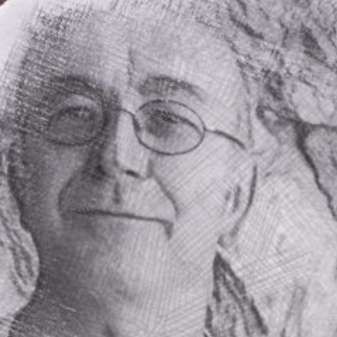RSNO cellist Peter Hunt's pre-concert talk began with a reading from Salman Rushhdie's novel, The Ground Beneath Her Feet. This reworking of the myth of Orpheus and Eurydice, was the inspiration for Open Ground by Russian-born (now Sweden-based) composer Victoria Borisova-Ollas. The novel's principal character, Vina Aspara, is caught up in an earthquake in Mexico. The complete work, a staged performance for orchestra, singers and narrator, also contains rock trio and harp. The 2006 première featured a film directed by Mike Figgis.
With so many elements missing, you might expect this 10-minute extract to be a pale shadow of the 80-minute original. The impression was quite the opposite. Scored for full orchestra, with four percussionists and piano, the piece begins extremely quietly but very quickly reaches the opposite end of the dynamic spectrum. Borisova-Ollas' depiction of the earthquake prompted me to consider the parallels between architecture in music and construction. In both cases, movement in the foundations soon causes instability. At this point, I became very aware of live music's ability to let the eyes inform the ears. The sight of so many left arms scurrying up and down the necks of cellos and double basses must surely have brought this acoustic tremor to everyone's attention. But what of the musical language? The composer herself describes her music as "a healthy blend of everything." This piece was certainly tonal and very cinematic. Some of the wonderfully played trumpet moments could have been be mistaken for Spielberg's composer of choice, John Williams. One of the most atmospheric moments was a 'scene' depicting stretcher-bearers retrieving bodies from the rubble. Judicious use of tubular bells, and their solemn refusal to blend exactly with the attendant harmonies, hinted at other more permanent realms - perhaps, given the literary inspiration, below ground.
Anthony Bateman's excellent programme notes described Schumann's ambition to rescue the piano concerto from being "a shallow virtuoso showpiece with the orchestra relegated to the status of near-passive bystander." In his Piano Concerto in A minor, Op 54, while not eschewing solo virtuosity, he certainly employed a sustained, homogeneous musical argument between soloist and orchestra. This was achieved partly through a series of exchanges between pianist and orchestra - particularly woodwind. Moreover, at one point in the second movement, the soloist assumes an accompanying role while the cellos enjoy the theme of the moment.
Soloist Barry Douglas was ideally qualified for such a piece. One of very few non-Russian winners of the Tchaikovsky Medal, he is a virtuoso player. As director of Camerata Ireland, he is no stranger to a holistic view of musical preparation and performance. His solo skills shone in the first movement's extended cadenza which begins with reflective counterpoint and passes through a more frenzied harmonic passage before settling into the final, quiet trills which invite the orchestra to rejoin. Douglas' more collegiate skills were best heard in musical conversations with the excellent Stephane Rancourt (oboe), John Cushing (clarinet) and Katherine Bryan (flute). This was a supremely musical performance which the audience seemed to enjoy enormously. Barry Douglas, his long hair and height reminiscent of Schumann, looked touch by this warm reaction to the performance.
Christoph Alstaedt's body language conveyed his change in role from relatively still mediator in the concerto to a much more physical expresser of the internal musical vision occasioned by Dvořák's Symphony No 8 in G major, Op.88. Continuing to conduct from memory, he seemed the very embodiment of the freedom which Dvořák brought to symphonic form. He had long intended to compose a pastoral work, specifically featuring birdsong and - the minor key introduction dispensed with - this cheery symphony delivers several unmissable avian moments. The Adagio showed the RSNO woodwind at their collective best. At one point the flutes combine to begin a questioning musical-box phrase which then takes an unmistakably Slavic turn as the clarinets provide their answer. The Allegretto Grazioso seemed the epitome of central European dance; a waltz with imbued with Bohemian flavour. Woodwind were again featured extensively and played with winning elegance. The closing Allegro ma non troppo's swagger was clinched by excellent RSNO brass. Confident trumpets opened the movement before yielding to strings who play the theme. There is a beautiful moment of contrast to the general bustle of the movement when the cellos offer a spacious, unhurried theme which one could easily mistake for Elgar. This is then developed across the strings and the sound here was gorgeous. By the end of the movement we couldn't fail to notice the three trombonists ratcheting up the volume in the joyous closing bars. However, the individual hero of this movement was Katherine Bryan who, in addition to various chirping duties also performed a beautifully florid solo.
This was a thoroughly enjoyable programme delivered with flair and great musicality.


